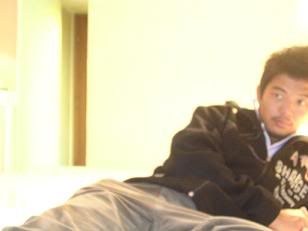DeaF issue.
Yesterday we had a long meeting at MYMCA, Steven Road and we discussed about what we could do in order to recruit more people to join our new deaf club Y!Deaf Club.
We explored on how we come up with unique programmes to differentiate our club from different clubs and yet we do not try to be at conflict with other clubs. I mentioned that I do not wish to see any programmes cannabalizing each other and in the end, there will be always infighting among the deaf community, leading to divided deaf community.
In New Zealand, the bill to recognise the New Zealand has been already approved, drawing round of applause and cheers from many deaf NZ. I believe many deafs in NZ have been tirelessly fighting to get the NZ govt to officially recognise NZ sign language as its official sign language.
See the news excerpt from the website
"
A voice for the deaf community
Media ReleaseFor Immediate Release
07 April 2006
A voice for the deaf community
Community and voluntary sector groups have congratulated the deaf community on yesterday’s recognition of sign language as an official New Zealand language.
With the passing of legislation today, New Zealand Sign Language has been recognised as the nation’s third official language, alongside English and Maori.
“This is a major achievement for the deaf community, as they have been striving to have sign language officially recognised for 20 years. The legislation is a long overdue acknowledgement of the importance of this language within our community”, says Andrea Goble, General Manager of the Funding Information Service, who is herself hearing impaired.
There are approximately 28,000 people who use sign language as their primary means of communication. The implementation of the New Zealand Sign Language Bill will allow sign language to be used in legal proceedings.
“This is a real step forward for New Zealand. It’s great to see community and voluntary sector needs being recognised and implemented in the legislative regime,” says Joce Swagerman, National Fundraiser of the Stroke Foundation of New Zealand.
Representatives from the Funding Information Service, the New Zealand Federation of Voluntary Welfare Organisations, Prison Fellowship New Zealand, the Stroke Foundation and Volunteering New Zealand all lend their support to the new legislation "
Ricko, a french deaf guy who had come to Singapore for his tour, shared with me that he had taken part in the demonstration in Paris to force the French government to recognise LSF as an official French Sign Language.
Looking at Singapoe and regional countries, Malaysia has already its own official Malaysian Sign Language, HK Hong Kong Sign Language, China China Sign Language, Philippines Philippines Sign Language and so on except Singapore. In Singapore, the deaf community never has any official sign language but we use SEE (Signed Exact English/Manually coded English) which is very much "artificial and not truly deaf language".
In fact, Singapore deafs never use SEE and we use PSE (Pidgin Signed English) and NSL (Natural Sign Language) which are commonly used among the deafs. It is interesting to note that the SAD (Singapore Association for the Deafs) strongly advocates the use of SEE for the sake of maintaining proper usage of English, paying close attention to its grammatical structure while the majority of the deaf does not use SEE largely in their everyday conversation.
So, it would really pave a path for us to embark on a difficult task to come up with the Singapore Sign Language which truly embody our own unique Singapore deaf culture.


1 Comments:
Hello
NSL is Native Sign Language. Not Natural Sign Language. Please do ammend it.
Cheers
Post a Comment
<< Home